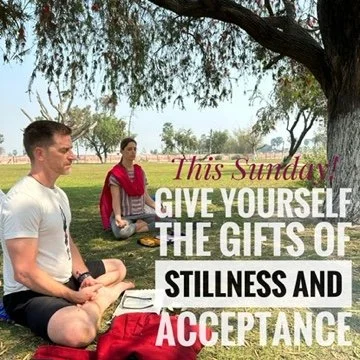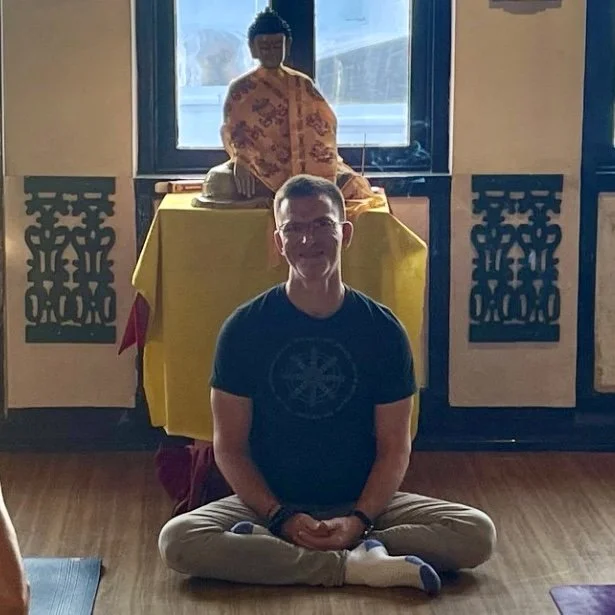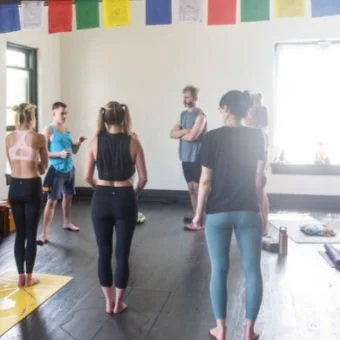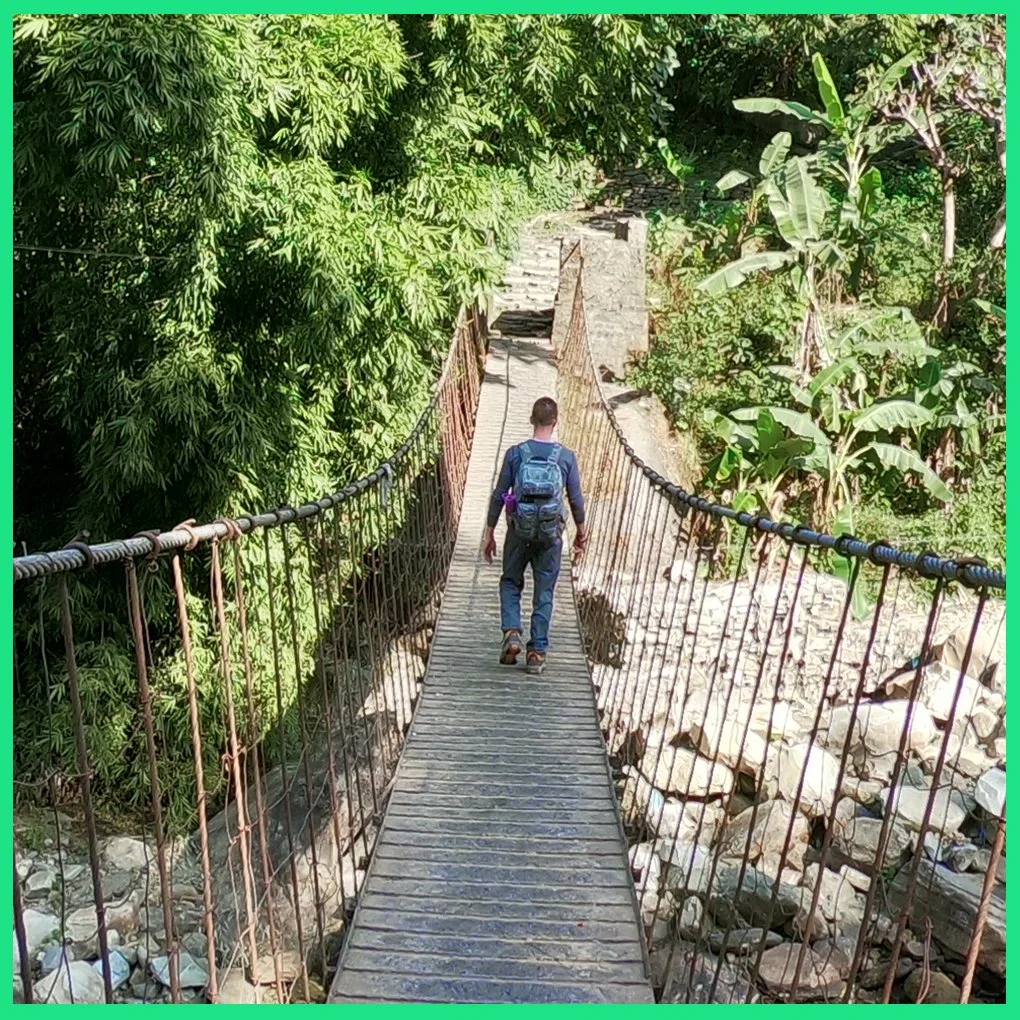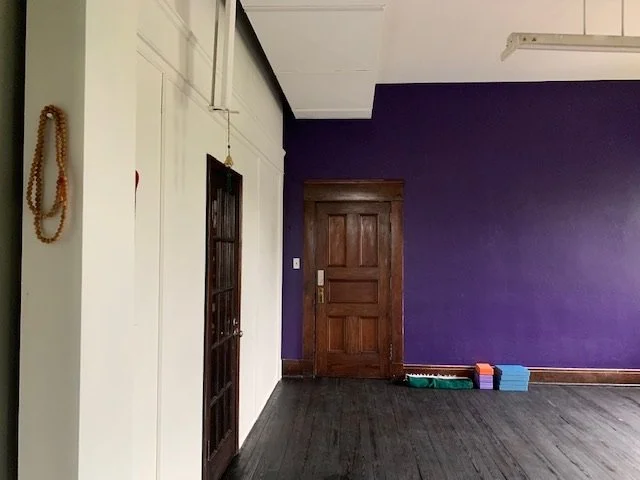Sutra 1.4 and the Sense of Self
When I took up sutra 1.4 for the umpteenth time this past week as I prepared to talk about it during our Saturday morning class I once again perceived it in a slightly different way than I had on prior explorations. That’s how dharma study works because every time we come to it our internal lens of viewing has changed in some way. This time it happened to coincide with study of the self as guided by Yongey Mingyur Rinpoche in his program Joy of Living Level 3. Rinpoche has been guiding us to examine our sense of self through a three-pronged approach of (1) unhealthy; (2) healthy; and (3) luminous (or ultimate) self.
Give Yourself the Gifts of Stillness & Acceptance
Getting still for some period of time, be it 5 min or 60+, presents us with an opportunity to become familiar with what is going on (feelings, emotions, thoughts, sensations) within and around us. And it just so happens that the Tibetan word for meditation is “gom” and it means “to become familiar with”. It’s that simple – taking some time to abide in and pay attention to our inner world. It’s not about criticizing, speculating, or fabricating. It’s simply paying attention while allowing whatever is there to come and go without resistance.
Cory's Practice Journal (Week 1042)
This week was no different. I learned that my sense of self can be up, down, positive, negative, emotional, not, and so on and that’s OK. And what I mean by that is that it’s what I do with it — how I respond to these things — that makes all the difference. In fact, I don’t need to respond at all, but rather just let it be. Now, I know this may not sound revolutionary and maybe you’re like “you didn’t already know that?”. But, here’s the thing. Yes, I “knew” it. But, this week, through my practice (Tergar’s Joy of Living Level 3) I feel like I was able to truly, at least begin to, fully understand and embody it.
Cory's Practice Journal (Week 1040)
This section emphasizes the importance of applying this equanimous mind to ALL beings – even the ones we dislike and think are horrible. A means to doing so is to focus on the recognition that we ALL (a) want to be happy (love); and (b) want to be free from suffering (compassion). It’s not an easy task, but the practice is super helpful. Each morning I’m guided to bring to mind those that I’m at odds with, those that I don’t like, that upset me, that I think are doing wrong in the world and try and see that they too are doing what they think will make them happy and avoid suffering.
The NOW of Yoga
From an inspirational point of view (and as long time practitioners one finds inspiration wherever one can!) this NOW is not your run-of-the-mill word, it’s rather auspicious – special, in other words – because it reminds us of the importance of shedding biases and prejudices and dropping into our direct experience as-it-is. If we can do that, if we can stay neutral to the push and pull of the material forces of like and dislike, attachment and aversion, then we have a shot at holding our mind in a state of yoga. This place of naturalness that allows us to move through the world with greater ease, happiness and less suffering.
Innate Love & Compassion
We know. We inherently know because, as Rinpoche points out, “innate love is often simply a feeling – an urge to be happy.” Granted it can be difficult to experience it as such, but this is why practice is so important and so beneficial. It provides the opportunity to cultivate this ability to experience and appreciate the essence of who we are.
The Principles of Vinyasa
Over these 15 years of teaching asana I’ve had the good fortune to work with thousands of different individuals on the mat. In doing so, one of the most common challenges I’ve encountered is the closed-mindedness many folks place on themselves by thinking that there is one “right way” to engage in a posture. This mindset forces us into a box - a very small, cramped, unhelpful box. A box that actually causes suffering – the very thing we’re learning to minimize in our lives through our practice.
Right Where I Wanna Be
At this point in life, with a bit of hindsight, it is rather compelling to consider how life might have played out if this one word had been changed for all of us — not what, but who – WHO do you want to be? That, it seems, would take us down the very meaningful road of sorting out our values and focusing on the qualities of being that uphold those.
What’s On the Other Side?
We all go through transitions everyday. Some minor, some major, many of them unnoticed and unplanned, but all potentially transformative. Yoga-meditation practice helps us become more adept at recognizing and navigating these transitional moments in our lives. It does this in several life-changing ways:
#IamNOTsomesickABOMINATION (alternate title “The Bible on the Toilet”)
My mind control rewrite had one major flaw – it was a big fat lie. I have been gay since the day I was born, I’d say even before that. For at least 12 years I had been stuck inside my head with no one to talk to, no one to share what was really happening, no one to hold me when I hurt.
The Older I Get, the Less I Know
Hence my response to James’ question was followed by: “I feel like the older I get, the less I know”. And, to be fully transparent, there was a part of me that felt like that was somehow a good thing (even though it left me in a state of uncertainty…).
Meditation: It's NOT what you THINK!
In the twelve years I’ve been going to Nepal I’ve learned a lot from my Tibetan Buddhist teachers. One of the biggest, most helpful and practical things I’ve learned is how to relax around the practice of meditation. I used to come into it with so much angst because it seemed like my mind would speed up, not slow down or even stop, as I thought it was supposed to. They helped me experience that meditation isn’t something you “do”, but rather something you become. In fact, even their word for meditation, which is “gom”, means to “become familiar with”. Isn’t that cool? For me, that alone conjures up a sense of ease because becoming familiar with something suggests it was there all along. And that is exactly the point. So, come join me next Wed May 4th at 5:15pmCST and we’ll explore becoming familiar, spend some time practicing, and find ways to bring more meditation into your life!
Faith in Humanity?
I noticed this happening and I took it as an opportunity to really try and put my practice to work. When someone cut in front of me in line or behaved aggressively in the airports, as they do, I would remind myself of the fact that they too are a sentient being with innate qualities of love and compassion — no matter how hidden those qualities were in that moment, they’re there and I just continued to remind myself of this. I did this again and again whenever I found that I was slipping back into modes of judgment or frustration or hostility to the actions that I was experiencing.
Guilt - What’s it Good For?
It doesn’t serve you, me or the community to get caught up in what didn’t happen. What does serve us all is to simply recognize that these are shared tribulations of anyone that is putting forth an effort to commit to something that requires repeated dedication of personal energy. Furthermore, it’s a dedication without end. This is a path we’re putting ourselves on that leads unendingly right up to the moment of our death. And I know, some folks get uncomfortable when I bring up death, but I’m not going to stop because that’s the whole point! Our practice is a means of preparing for the most important moment of our lives — the END.
Not Knowing
Not knowing. We tell ourselves that we know a lot of things. We go to school, some of us for 25 years or more, in part, I think, to further convince ourselves of how much we know. Speaking as someone who did just that, the thing that stands out to me is that the further I progress in the realm of study, the less I feel that I actually know. It’s a realized actualization of uncertainty.
Yoga isn't willy nilly
Keep in mind, the practice is meant to reduce our suffering in all its myriad of forms from pain to dissatisfaction and anxiety — and bring us closer to remembering our true nature. That doesn’t happen quickly, it doesn’t happen without focused effort, and it requires persistent cultivation through the course of one’s life. As for the three times a week for at least three months — that’s a general timeframe and level of consistency that is necessary to begin to get a real feel for the practice (Mysore or otherwise) — it’s challenges and benefits. If you find yourself struggling to make such a minimum commitment and stick to it — but you want to —I’ve got good news for you. January 8th we’re launching The 3x3x3 Mysore Challenge — a community supported program to explore the path of yoga!
Jnana Mudra - Transcending the Gunas
Each component of this gesture carries deep meaning. Overall it is said to channel pranic energy to revitalize our being and overcome the negative impacts of ego. We usually release prana through our extremities; however, by forming this loop we retain some and send it inward to help calm and steady the mind to provide support for the meditative state.
The True Purpose of Yoga Practice
The deeper aim of Ashtanga Yoga is to burn through the negative behavioral patterns and reveal the truth of the inner being. When tapas enter the higher consciousness, the result is the light of spiritual awakening, known as viveka, or wisdom. This wisdom is the lamp of knowledge that illuminates the journey within. While physical poses are a tool toward this end, the inner awakening is the true purpose of yoga practice.”
That First Day at the Nunnery...
I’m not sure how to describe this, but the moon light over Nagi Gompa is unlike any I’ve experienced anywhere else (more on this to come in a future blog). It has a languid, illuminating, enrobing quality. It’s beautiful and absolutely still. It’s like a blanket of meditation falls upon the body. For a moment I just held still to soak it in. Then I made my way around the puja hall toward the increasingly frequent drone of the morning gong. I made my way in, prostrated to the giant golden Buddha three times and then to Green Tara before I took my seat along the back wall. Wrapped in my coat and blanket it was surreal to be sitting there amongst the women of the nunnery. It felt right.


